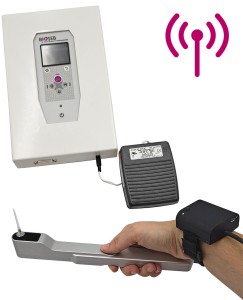Authors
Y Liu, XY Zhang, YY Fan et al
Lab
Peking University School and Hospital of Stomatology, Beijing, China.
Journal
Journal of Oral Rehabilitation
Abstract
Background Oro-facial pain is more prevalent in women than in men, and oestrogen may underlie this sex difference. Genistein reversed the potentiation of 17beta-estradiol (E2) on glutamate-induced acute masseter nociceptive behaviour, but its role in dental experimental occlusal interference (EOI)-induced chronic masseter hyperalgesia remains unclear.
Objective This study aimed to investigate sex differences, and to explore the role and underlying mechanisms of genistein in E2-potentiated EOI-induced chronic masseter hyperalgesia in rats.
Methods Female and male rats were prepared to compare the sex differences of masseter hyperalgesia induced by EOI using a 0.4-mm-thick metal crown. Female rats were ovariectomised (OVX) and treated with E2 and genistein, followed by EOI. The head withdrawal threshold (HWT) was examined to assess masseter sensitivity. The protein expression of transient receptor potential vanilloid-1 (TRPV1) in the trigeminal ganglion (TG) was detected using western blotting. Immunofluorescence staining was used to reveal the colocalisation of oestrogen receptors (ERs) with TRPV1 and the percentage of TRPV1-positive neurons in the TG.
Results To some extent, female rats displayed enhanced sensitivity to EOI-induced chronic masseter hyperalgesia compared with males. Female rats showed the lowest HWT in the pro-oestrus phase. Pre-treatment with genistein antagonised E2 potentiation in EOI-induced masseter hyperalgesia and blocked the effect of E2 by downregulating TRPV1 protein expression and the percentage of TRPV1-positive neurons in the TG.
Conclusion Female rats showed greater masseter hyperalgesia than males under EOI. Genistein antagonised the facilitation of EOI-induced chronic masseter hyperalgesia by E2 probably through inhibiting TRPV1 in the TG.
BIOSEB Instruments Used
Electronic Von Frey 4 (BIO-EVF4),Electronic Von Frey 5 with embedded camera (BIO-EVF5)
Source :

 Douleur - Allodynie/Hyperalgésie Thermique
Douleur - Allodynie/Hyperalgésie Thermique Douleur - Spontanée - Déficit de Posture
Douleur - Spontanée - Déficit de Posture Douleur - Allodynie/Hyperalgésie Mécanique
Douleur - Allodynie/Hyperalgésie Mécanique Apprentissage/Mémoire - Attention - Addiction
Apprentissage/Mémoire - Attention - Addiction Physiologie & Recherche Respiratoire
Physiologie & Recherche Respiratoire




































 Douleur
Douleur Système Nerveux Central (SNC)
Système Nerveux Central (SNC)  Neurodégénérescence
Neurodégénérescence Système sensoriel
Système sensoriel Système moteur
Système moteur Troubles de l'humeur
Troubles de l'humeur Autres pathologies
Autres pathologies Système musculaire
Système musculaire Articulations
Articulations Métabolisme
Métabolisme Thématiques transversales
Thématiques transversales Congrès & Meetings
Congrès & Meetings 
